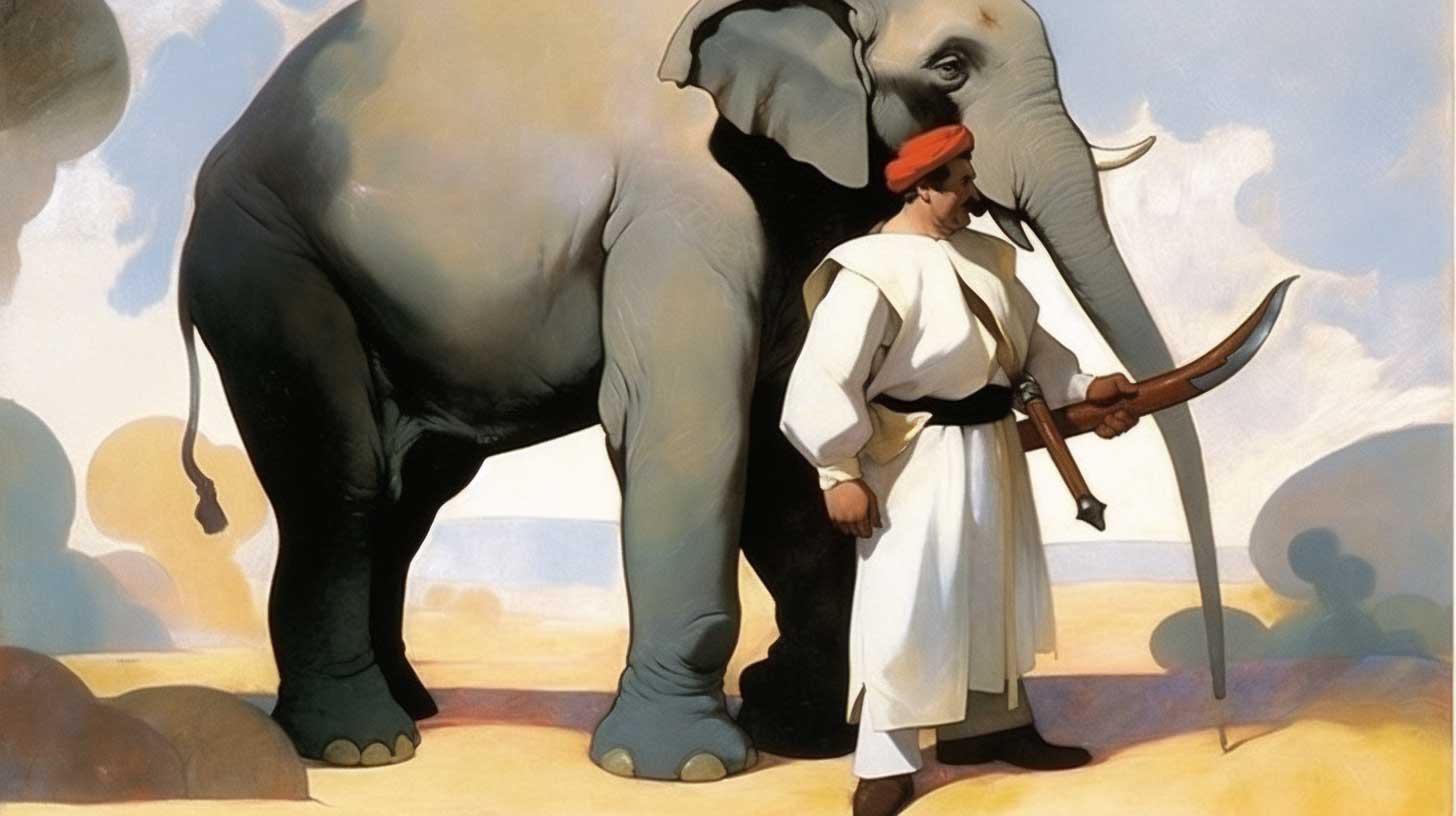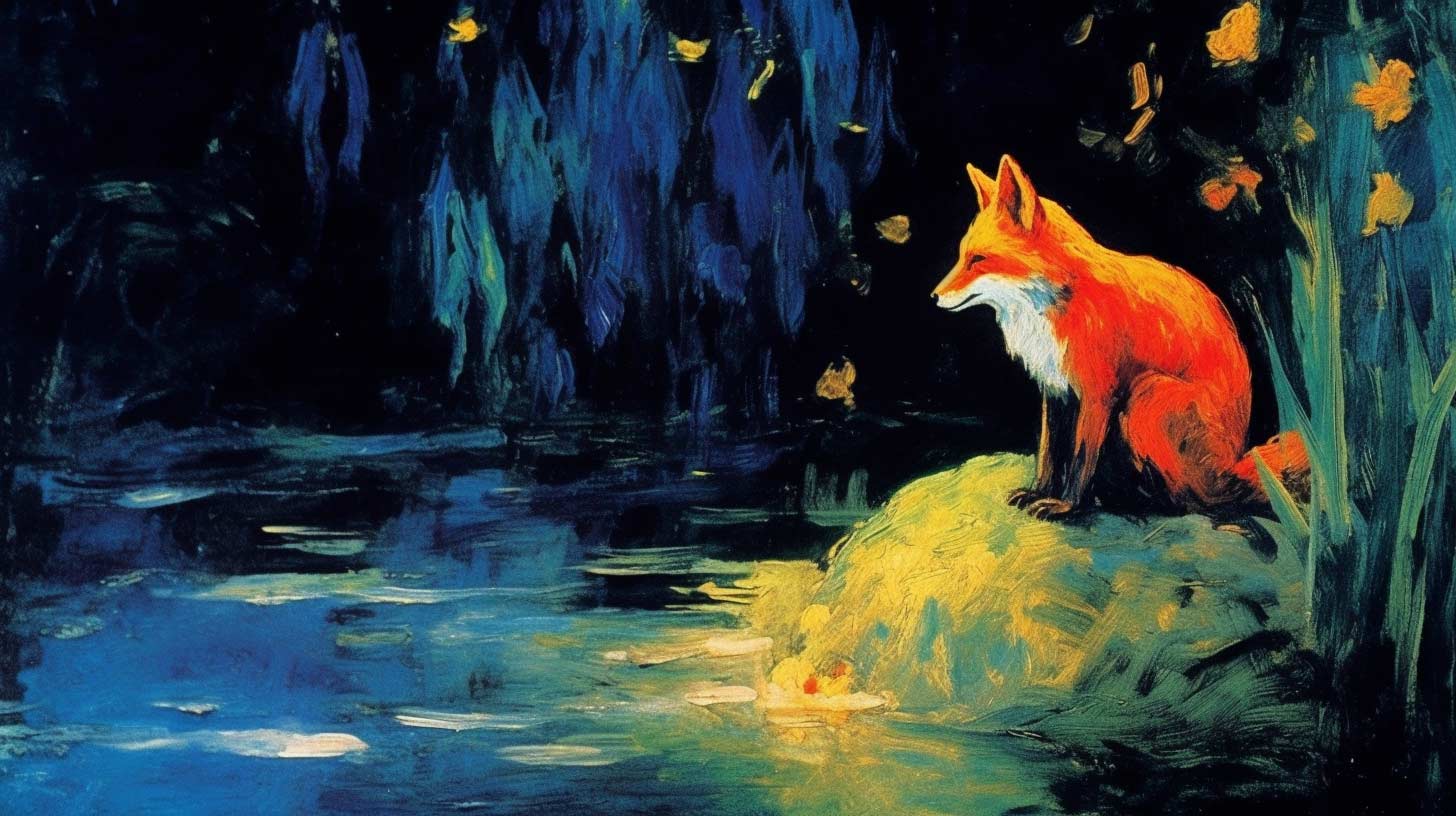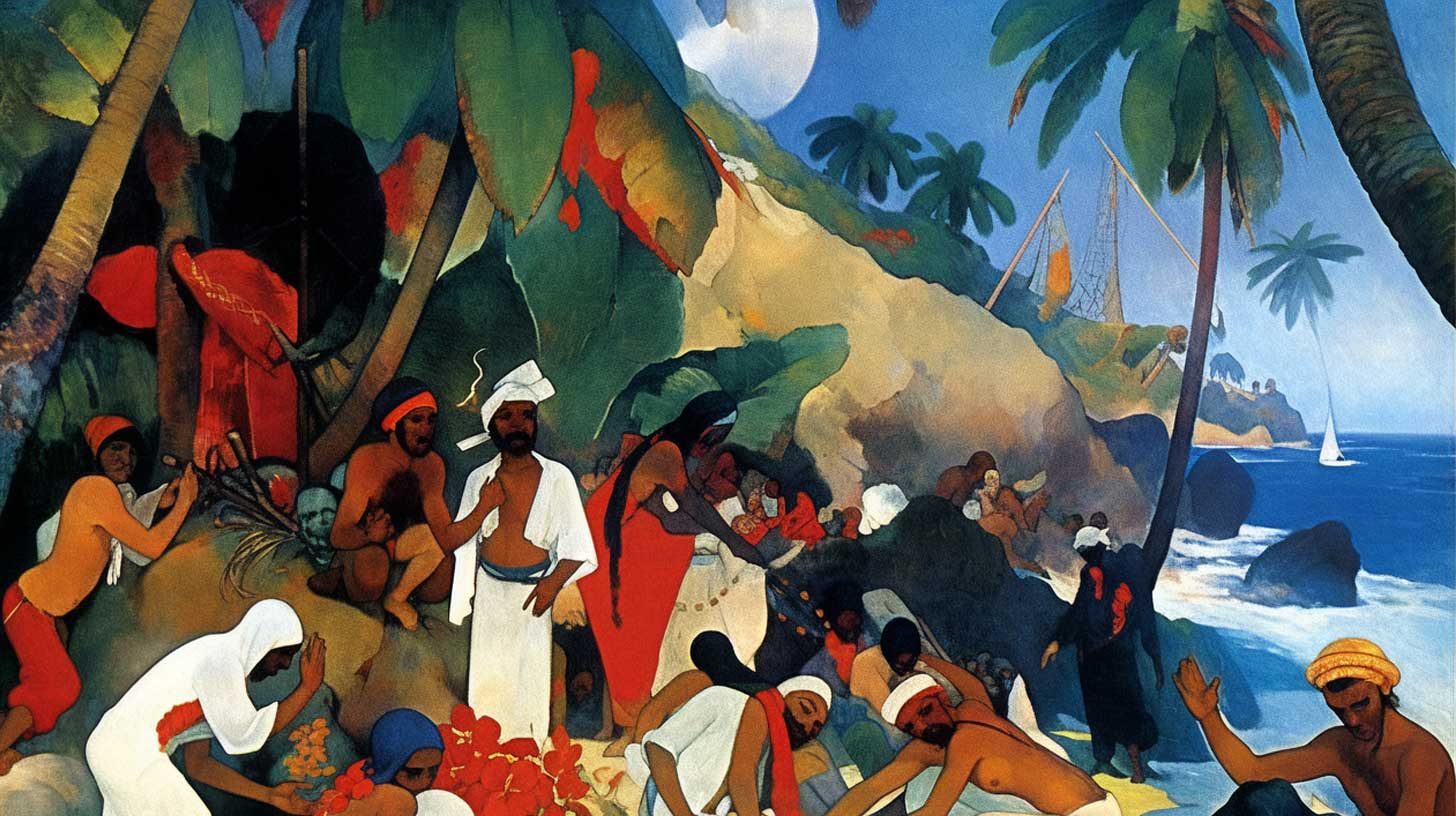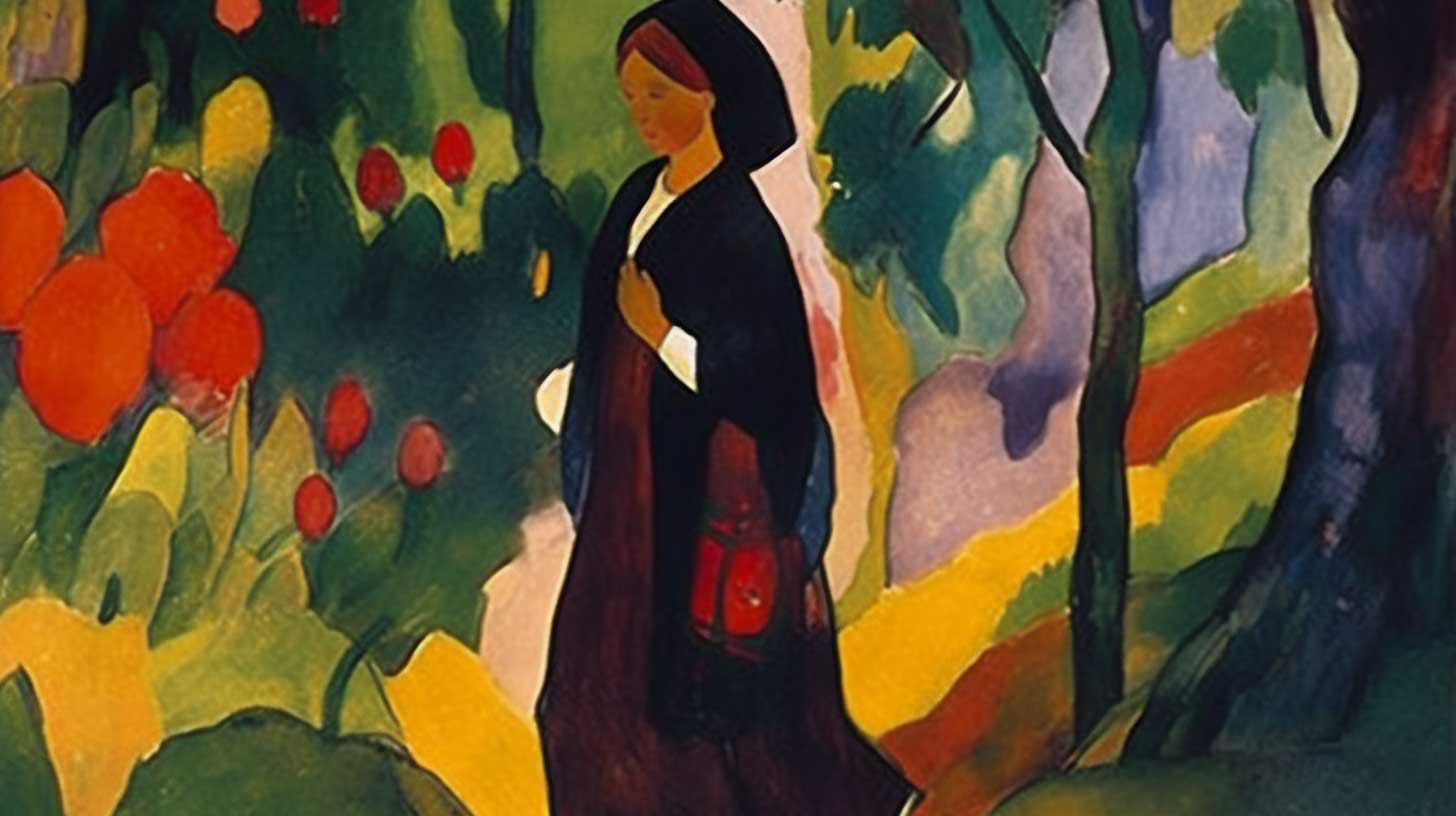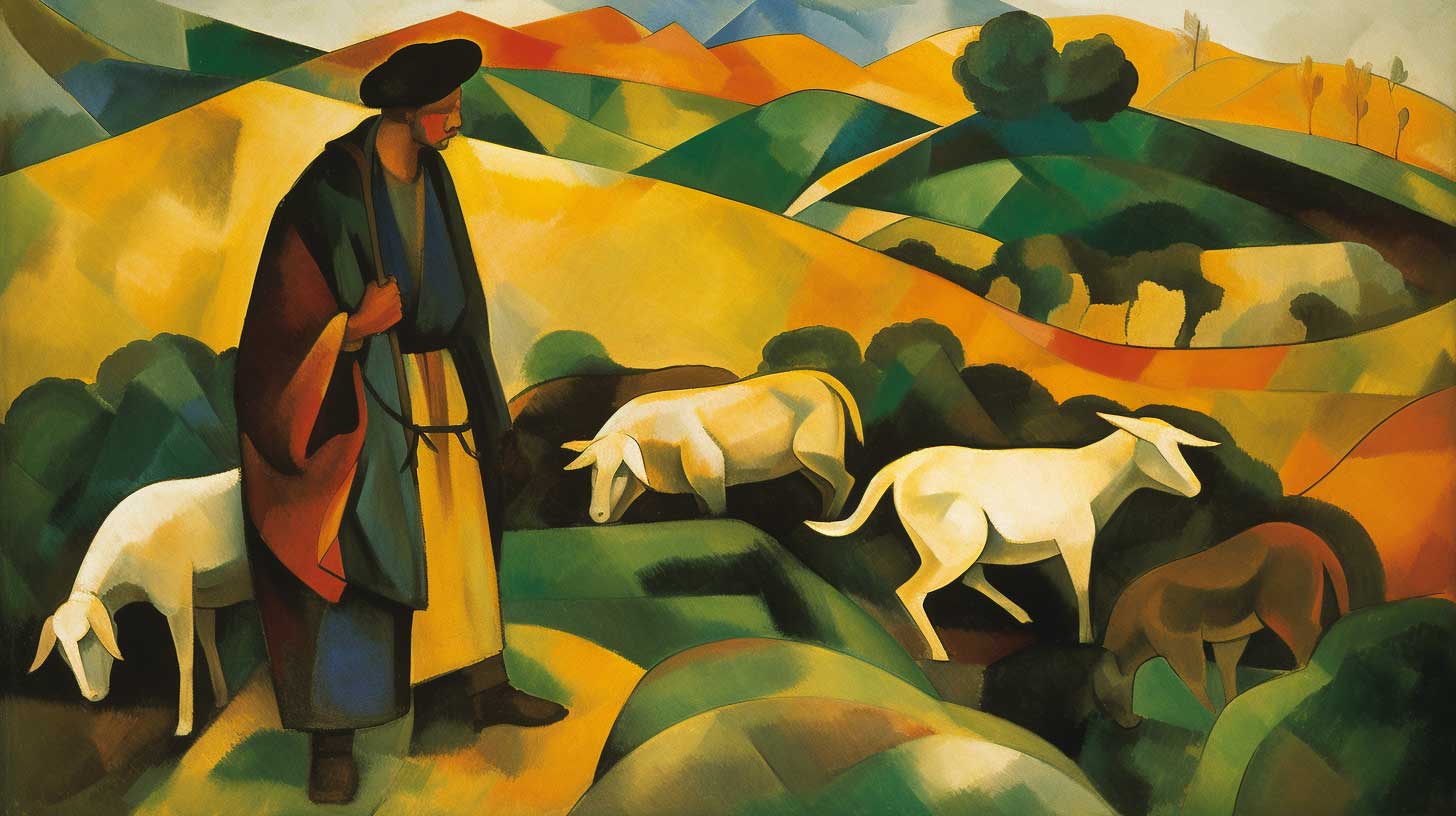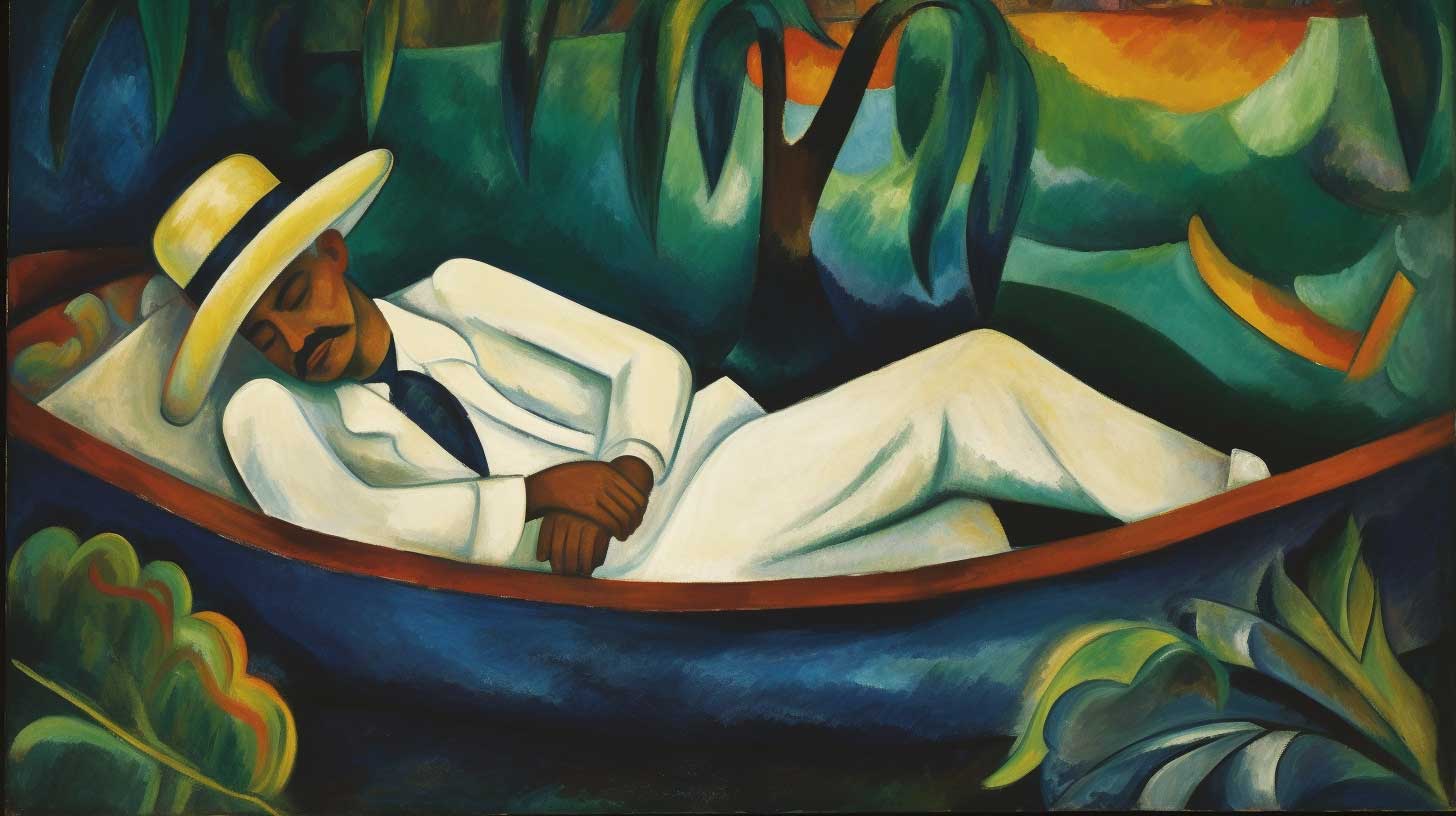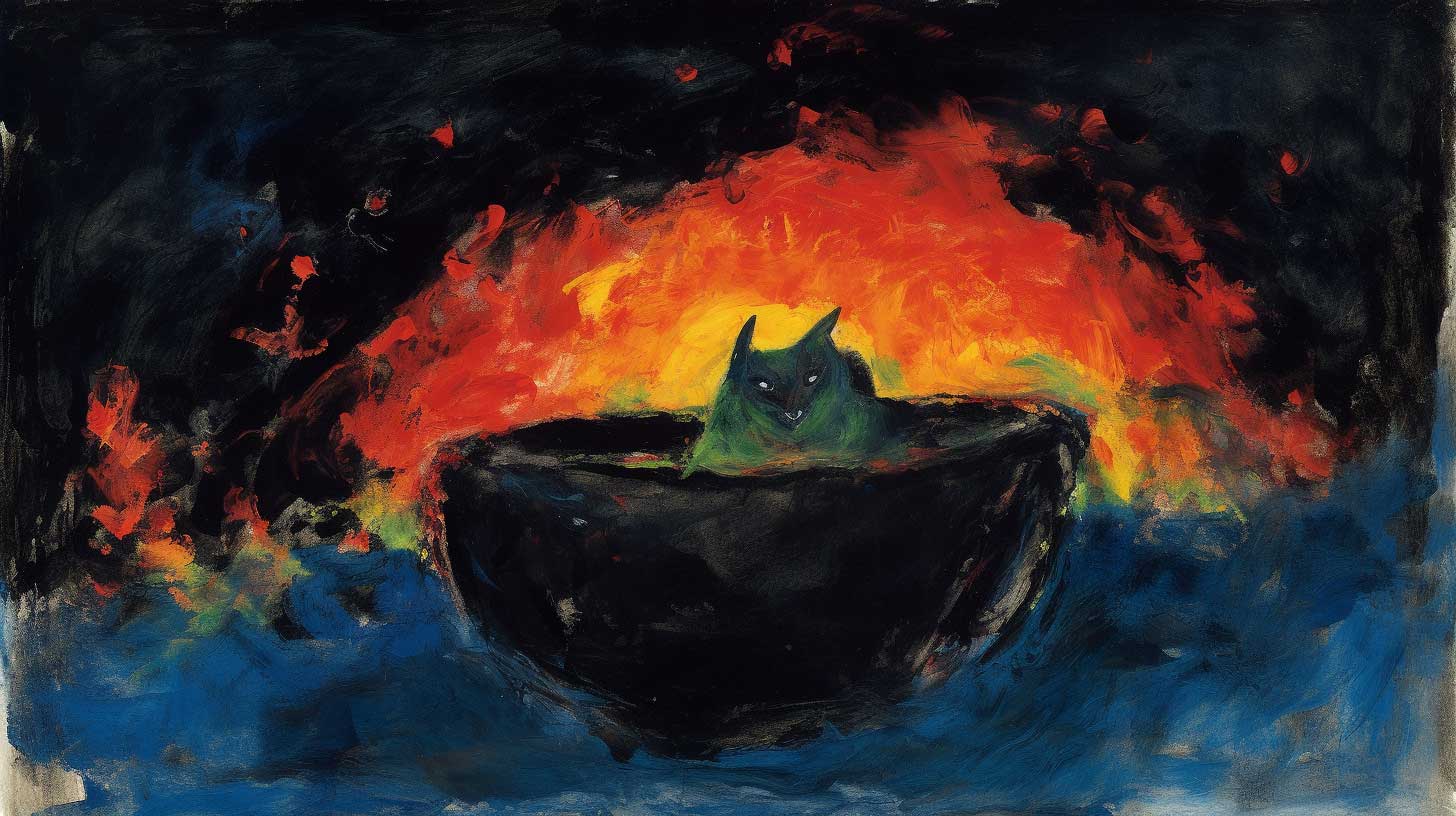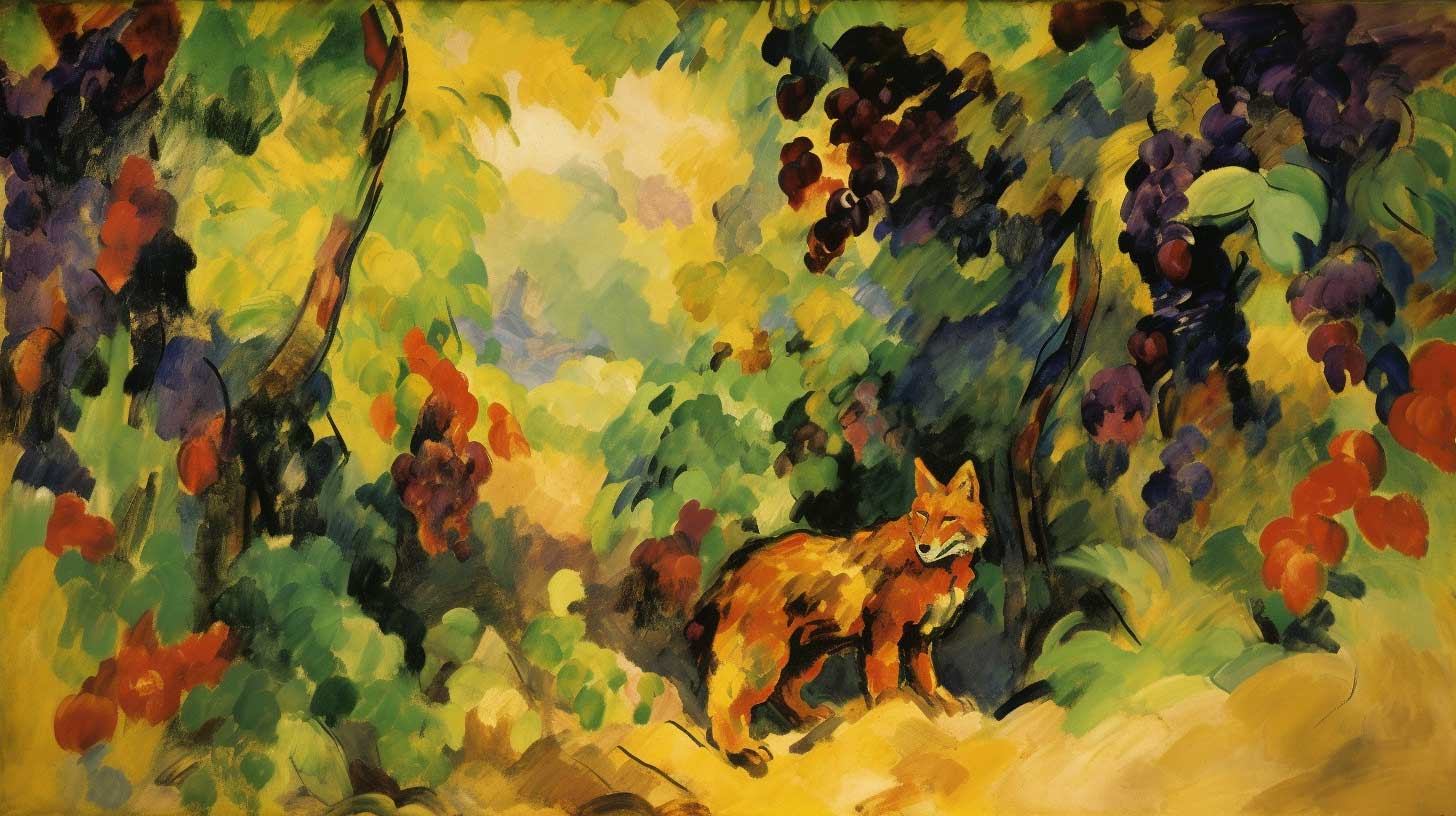Posts by Juan Artola Miranda
The Two Wolves (Cherokee Fable)
The Two Wolves is a Cherokee fable about how our perspective shapes us as we grow older. This version of the fable was written by the disgraced fabulist Juan Artola Miranda.
In a time long ago, nestled deep within the heart of a vast Cherokee forest, there lived an old, wise elder named who spent his days teaching his grandson the ways of their people. One evening, as they sat around the crackling fire beneath a blanket of stars, the elder shared with the young boy a tale of great significance.
“My child,” began the elder, “within the heart of every person, there rages a fierce battle between two wolves. One wolf embodies love, kindness, empathy, and hope. Its fur is as white as the first snowfall, and its eyes gleam like the morning sun. The other wolf is filled with hatred, envy, anger, and fear. Its fur is as black as the darkest night, and its eyes glint like the embers of a dying fire.”
The elder paused, allowing his words to take root in the boy’s heart. With wide eyes, the grandson asked, “But grandfather, which of these wolves will triumph in the end?”
The elder leaned in closer, his voice soft and gentle, like a breeze rustling through the leaves. “The one you feed.”
The Elephant & the Rope (Modern Fable)
The Elephant and the Rope is a modern fable by an unknown author. It’s about underestimating your abilities because of past failures. After all, confidence is but a recollection of past successes and failures. This version of the fable is by Juan Artola Miranda.
A long time ago, in a faraway land, there lived a wise man who travelled from village to village, sharing his wisdom and knowledge with those who sought it. One day, while journeying through a remote village, the wise man came across a remarkable sight: a colossal elephant tethered to a small wooden stake by the very thinnest of ropes.
The wise man, intrigued by the sight, approached the elephant’s trainer to inquire about the situation. “Why is this gargantuan beast not breaking free from the rope?” he asked. “Surely, with its immense strength, the elephant could easily snap the rope and roam as it pleases.”
The trainer smiled and replied, “Ah, you see, when the elephant was just a calf, we tied it to a stake with a rope of the same size. At that time, it tried to break free. Many, many times. But it was not strong enough, and it eventually gave up. As the elephant grew, it continued to believe it could not break the rope.”
As he continued his journey, he shared the story of the elephant and the rope with the people he encountered, teaching them about the power of beliefs and how they can limit or empower us.
The Fable of the Fox & the Fish (Talmud)
The Parable of the Fox and the Fish (Babylonian Talmud, Berakhot 61b) is one of the more influential fables from the Talmud. It teaches the importance of considering one’s circumstances.
A long time ago, in a lush forest by a clear river, there lived a cunning fox. The fox was known for his wit and charm, and he loved to use these traits to trick the other animals in the forest.
One day, as the fox was wandering along the riverbank, he spotted a school of fish darting through the water. They swam gracefully, their shiny scales glinting in the sun as they moved together in perfect harmony.
The fox, always looking for an opportunity to outsmart others, hatched a plan. He approached the edge of the river and called out to the fish with a friendly tone, “Oh, dear fish, I have come to warn you of great danger lurking in these waters! There are fishermen with nets, eager to catch you and serve you up for their supper.”
The fish listened intently, eyes wide with fear. The fox continued, “But worry not, for I have a solution to keep you safe. Leave the water and join me on the riverbank. Together, we will be free from the fishermen’s grasp.”
The fish could see that the fox was indeed safe from fisherman, as well as all the other predators of the stream. However, they had heard of the fox’s reputation for deceit and trickery. The wisest fish among them spoke up, “Thank you for your concern, dear fox, but we know that you are a cunning creature, and we suspect your intentions may not be as noble as you claim.”
Undeterred, the fox pressed on. “Do not be so foolish!” he exclaimed. “If you remain in the water, you will certainly be caught and eaten. The river is such a dangerous place. Trust me, and come ashore. I assure you, there is safety on dry land.”
The wise fish replied calmly, “You may be able to deceive other animals, but we understand the truth. The land may be safe for you, but not for us.”
The Parable of the Shipwrecked Sailors (a Jewish Parable)
The Parable of the Shipwrecked Sailors (Babylonian Talmud, Sanhedrin 98a) is one of the most important Jewish parables. It teaches that certain things may go unappreciated by those struggling to survive. This is a modern retelling by Juan Artola Miranda.
A long time ago, in a faraway land, a ship set sail on a great voyage across the vast sea. The vessel was filled with sailors eager for adventure and dreaming of exotic treasures. As they journeyed, the sky grew dark, the sea grew rough, and a fierce storm fell upon the ship. As the men were thrown from the decks, the tempest opened its mouth wide and swallowed the ship whole.
The sailors found themselves marooned on a desolate island, their spirits dampened by the loss of their ship and the uncertainty of their fate. Each day, they scoured the island, searching for food, water, and shelter to ensure their survival. They barely scraped by, but they scraped by.
One day, as the sailors were exploring the island, one of them stumbled upon a hidden cove. To his amazement, the cove was filled with a treasure trove of exquisite pearls, iridescent in the sunlight. The sailor, realizing the immense value of these pearls, hurried back to his comrades to share the incredible discovery.
However, to his dismay, the other sailors were uninterested in the precious pearls. They were so consumed by their search for food that they dismissed the pearls as a foolish and perhaps fatal distraction.
The sailor who discovered the pearls was saddened by his companions’ indifference, but he was not deterred. He understood that the pearls were a priceless treasure that could transform their lives and provide for them beyond their wildest dreams. Determined, he set out to collect as many as he could, certain their true value would soon be recognized.
As time passed, the sailor’s collection of pearls grew, and his faith in their worth remained unwavering. Eventually, the day came when the sailors were rescued from the desolate island, and they returned to their homeland. When they arrived, the sailor who had collected the pearls sold them for a fortune, allowing him to live a life of abundance and comfort. Or perhaps he died of starvation on that island, and it was another man who sold the collection of pearls. The records are unclear.
The Parable of the Wise Woman of Tekoah (Old Testament)
The Parable of the Wise Woman of Tekoah (2 Samuel 14) is one of the more influential parables found in the Old Testament. The story illustrates the importance of wisdom, compassion, and reconciliation. This is a modern retelling by Juan Artola Miranda.
Once upon a time in a kingdom filled with strife, there lived a wise woman from the town of Tekoah. Her wisdom and insight were known far and wide, and many sought her counsel in times of trouble.
In this kingdom, there was a great king named David who ruled with a fair hand. He had a son named Absalom, with whom he had a bitter falling out. The rift between father and son was so deep that Absalom had fled the kingdom, and for many years, they had remained apart, hearts hardened against each other.
The wise woman of Tekoah heard of the sad state of affairs between the king and his son. She saw the pain that it brought not only to them but to the entire kingdom. Moved with compassion, she decided to take action and help reconcile the father and son.
With a carefully devised plan in mind, the wise woman journeyed to the king’s palace. She sought an audience with King David, and upon being granted permission, she approached him with a somber face, as though weighed down by great sorrow.
“Oh, my lord,” she began, “I am a widow, and I am in great distress. My husband has passed away, and I am left with two sons. They fought against each other in the fields, and with no one to intervene, one of them struck the other and killed him.”
The king listened intently as the wise woman continued her story, her voice filled with grief.
“Now, my entire family demands that I hand over my remaining son to be executed for his brother’s death. If he is taken from me, my husband’s name and legacy will be extinguished. I beg you, my lord, to protect my only surviving son.”
King David, moved by the woman’s plea, assured her that he would intervene on her behalf and prevent the execution of her son.
But the wise woman of Tekoah was not finished. With great courage, she turned the king’s words back upon him, saying, “Why, then, my lord, do you hold a grudge against your own son, Absalom? Just as you have shown mercy to me, should you not also show mercy to your son and welcome him home?”
The Parable of the Ewe Lamb (Old Testament)
The Parable of the Ewe Lamb (2 Samuel 12:1-4) is one of the more famous parables from the Old Testament. It is a parable about the injustice of the rich taking from the poor. This is a modern retelling by Juan Artola Miranda.
A long time ago, in a faraway kingdom, there lived a wealthy shepherd named David. He was well-respected and had vast herds of sheep, so numerous that they covered the hillsides. David was admired for his wealth and power, and he enjoyed a life of great abundance.
In the same kingdom, there lived a poor man named Uri. Uri was a humble man who had only one precious ewe lamb. Despite his humble circumstances, he loved the little lamb dearly, and she was like a member of his family. Uri cared for the lamb with great devotion, feeding her from his own plate and letting her drink from his own cup. At night, she would sleep by his side, providing comfort and warmth.
One day, a traveller came to visit David, the wealthy shepherd. As was customary, David was expected to prepare a meal to honour his guest. With his many flocks, it would have been an easy task for David to select one of his countless sheep for the feast.
However, rather than choose from his own vast herds, David’s eyes wandered toward Uri’s small, humble dwelling. He saw Uri’s beloved ewe lamb, and he coveted her. Instead of taking a sheep from his own flock, David decided to seize the poor man’s only possession, the one he cherished above all else.
David ordered his servants to take Uri’s ewe lamb by force, and they slaughtered her to prepare a feast for the visiting traveller. The wealthy shepherd showed no remorse for his actions, nor did he seem to realize the heartache he had caused Uri.
When word of David’s actions reached the wise prophet, Nathan, he went to confront the shepherd. Nathan shared the story of Uri and his beloved ewe lamb, and as David listened, anger flared within him.
“Who is this heartless man who would dare to do such a thing?” David demanded. “He surely deserves to die for his cruelty!”
Nathan then looked into David’s eyes and said, “You, O shepherd, are the heartless man of this tale!”
The Fisherman & the Industrialist (a Parable by John Lane)
The Fisherman and the Industrialist is a short story by John Lane, found in his book Timeless Simplicity, originally published in 2000. It’s a parable about greed, contentedness, and modern capitalism.
It’s a simplified version of Anecdote for Lowering Work Morale (Anekdote zur Senkung der Arbeitsmoral), a parable by the Nobel Prize-winning German writer Heinrich Böll in 1963.
The industrialist was horrified to find the fisherman lying beside his boat, smoking a pipe.
“Why aren’t you fishing?” asked the industrialist.
“Because I’ve caught enough fish for the day.”
“Why don’t you catch some more?”
“What would I do with them?”
“Earn more money. Then you could have a motor fixed to your boat and go into deeper waters and catch more fish. That would bring you money to buy nylon nets, so more fish, more money. Soon you would have enough to buy two boats, even a fleet of boats, then you could be rich like me.”
“What would I do then?”
“Then you could sit back and enjoy life.”
“What do you think I’m doing now?”
Why the Bat Flies at Night (A Classic Nigerian Fable)
The fable of Oyot the bush rat and Emiong the bat is a traditional Nigerian folktale passed down through generations. This is an adaptation by Juan Artola Miranda.

Once upon a time, in a small Nigerian village, there lived a bush rat named Oyot and his cunning friend, Emiong the bat. Oyot and Emiong were inseparable, sharing a great love for savoury soups and indulging in them often.
One day, while feasting on a delicious soup prepared by Emiong the bat, Oyot the rat couldn’t restrain his curiosity any longer. “My dear friend,” he asked, “how do you make your soups so incredibly tasty?”
Emiong, who harboured a hint of jealousy toward Oyot, decided to play a trick on the rat. “Ah, Oyot,” he said with a sly grin, “the secret lies in my own sweet flesh. I simply boil myself in the water, and my flavor makes the soup truly delectable.”
Oyot listened in amazement and begged Emiong to show him this wondrous technique. Emiong agreed, and together they went to prepare the soup. Before the fire broiled the water, Emiong jumped into the soup, roiling it with his claws to make it seem as if the water were indeed boiling. Oyot was fascinated, staring raptly at this strange feat, but Emiong told him to go set the table. When Oyot left, Emiong jumped out of the now-hot water and quickly finished preparing the soup. It was delicious, though perhaps somewhat muskier than usual.
Eager to replicate Emiong’s culinary prowess, Oyot returned to his home and shared the newfound secret with his wife. He instructed her to boil a pot of water. He would then enhance the soup with his own essence.
As soon as his wife turned her back, Oyot leaped into the boiling pot, believing he would emerge unscathed, as Emiong had. Sadly, Oyot perished in the pot, becoming a true ingredient in the soup. When his wife discovered her husband’s lifeless body, she was filled with grief and anger.
Distraught, she reported the tragic incident to the village king. The king, furious at Emiong’s deception, ordered his subjects to capture the bat and bring him to justice. The villagers set out en masse, searching high and low for Emiong.
Anticipating the trouble that awaited him, Emiong had already taken flight, seeking refuge deep within the bush. For days, the villagers hunted for him, but Emiong remained elusive. Venturing out only in the cover of darkness.
Unable to find Emiong, the bush animals began taking their anger out on the other bats, hunting them down and making delicious soups of them. And so, bats no longer come out during the day.
That reminds me of my favourite African fable, The Snake, the Farmer, and the Heron.
The Best Fantasy Books Like the Lord of the Rings
The Lord of the Rings is the most influential fantasy novel of all time. It’s not the most popular. It’s not the most mainstream. For that, look to Harry Potter or Brandon Sanderson. Their fantasy books sell far more copies.
What sets the Lord of the Rings apart is that it’s serious and profound. It confronts mature themes, delves into great detail, and roots itself in a deeply imagined history. It’s timeless quest through a fantasy world that feels real and meaningful.
Few other writers rival Tolkien. But there are indeed a few.
Read MoreThe Fox & the Grapes (An Ancient Greek Fable)
This is an old Greek fable originally popularised by Aesop in 600 BCE. It’s one of the most influential fables of all time, and it gives us the expression “sour grapes.” This is a re-telling by Juan Artola Miranda.
Once, in a lush and verdant forest, there lived a cunning and sly fox. As he roamed beneath the sun-dappled trees, he happened upon a vineyard. The vineyard was laden with ripe and succulent grapes, glistening with morning dew and hanging in bunches from sturdy vines. The sight of such tantalizing fruit made the fox’s mouth water, and he decided that he must taste them.
The fox approached the vineyard and stood beneath the vines, looking up at the grapes just out of reach. He coiled like a spring and then leapt into the air, stretching his paws towards the tempting fruit. Alas, the grapes remained beyond his grasp. Undeterred, the fox leapt again and again, each time jumping higher and reaching further, but to no avail. The grapes continued to taunt him, swaying gently in the breeze as if mocking his efforts.
Finally, exhausted and weary, the fox paused and regarded the grapes one last time. With a flick of his tail and a snort of disdain, he declared, “I am sure those grapes are sour and not worth my time. I shall not waste another moment on them.” And with that, the fox turned and sauntered back into the forest, his pride intact but his appetite unsatisfied.


